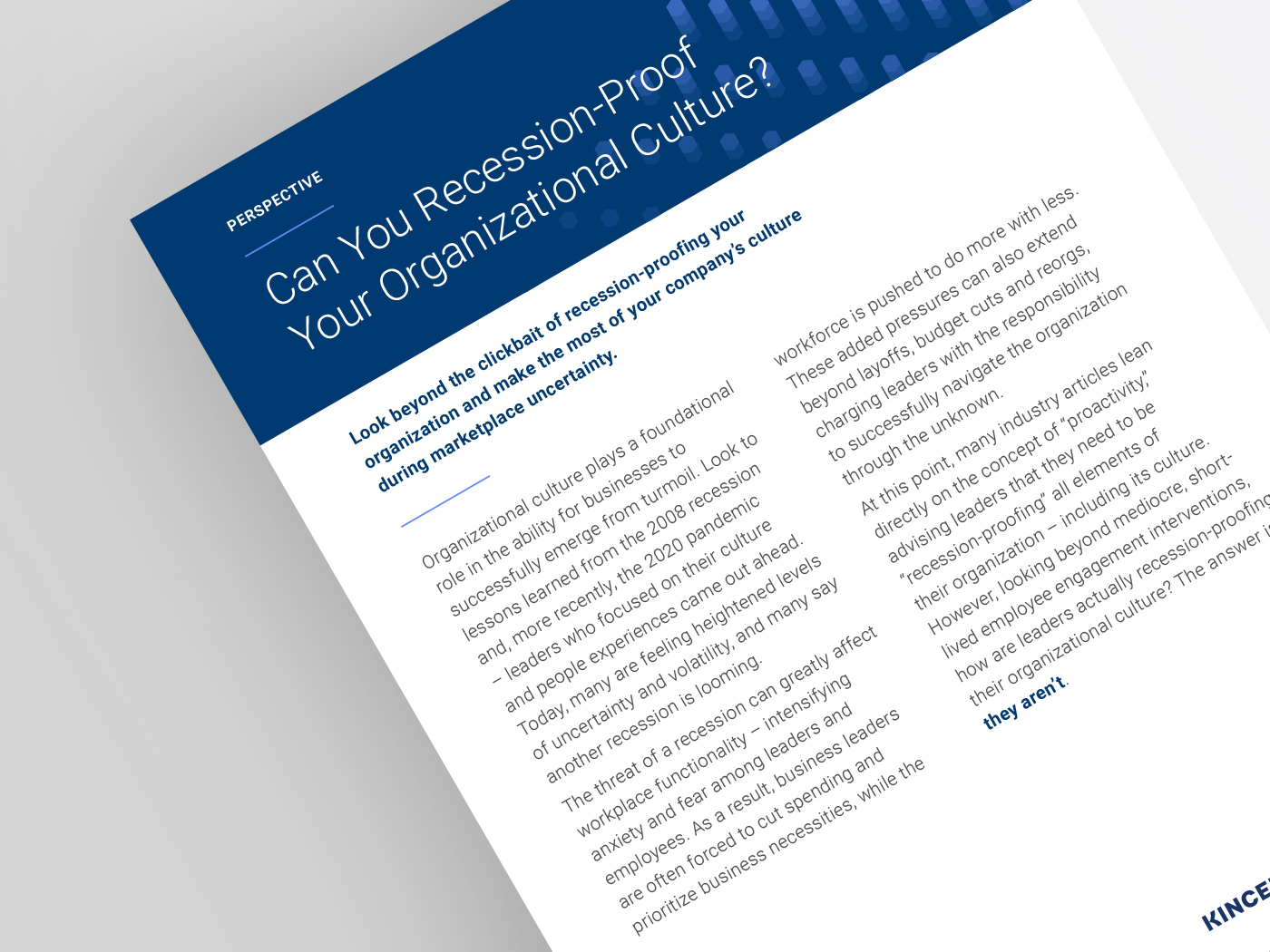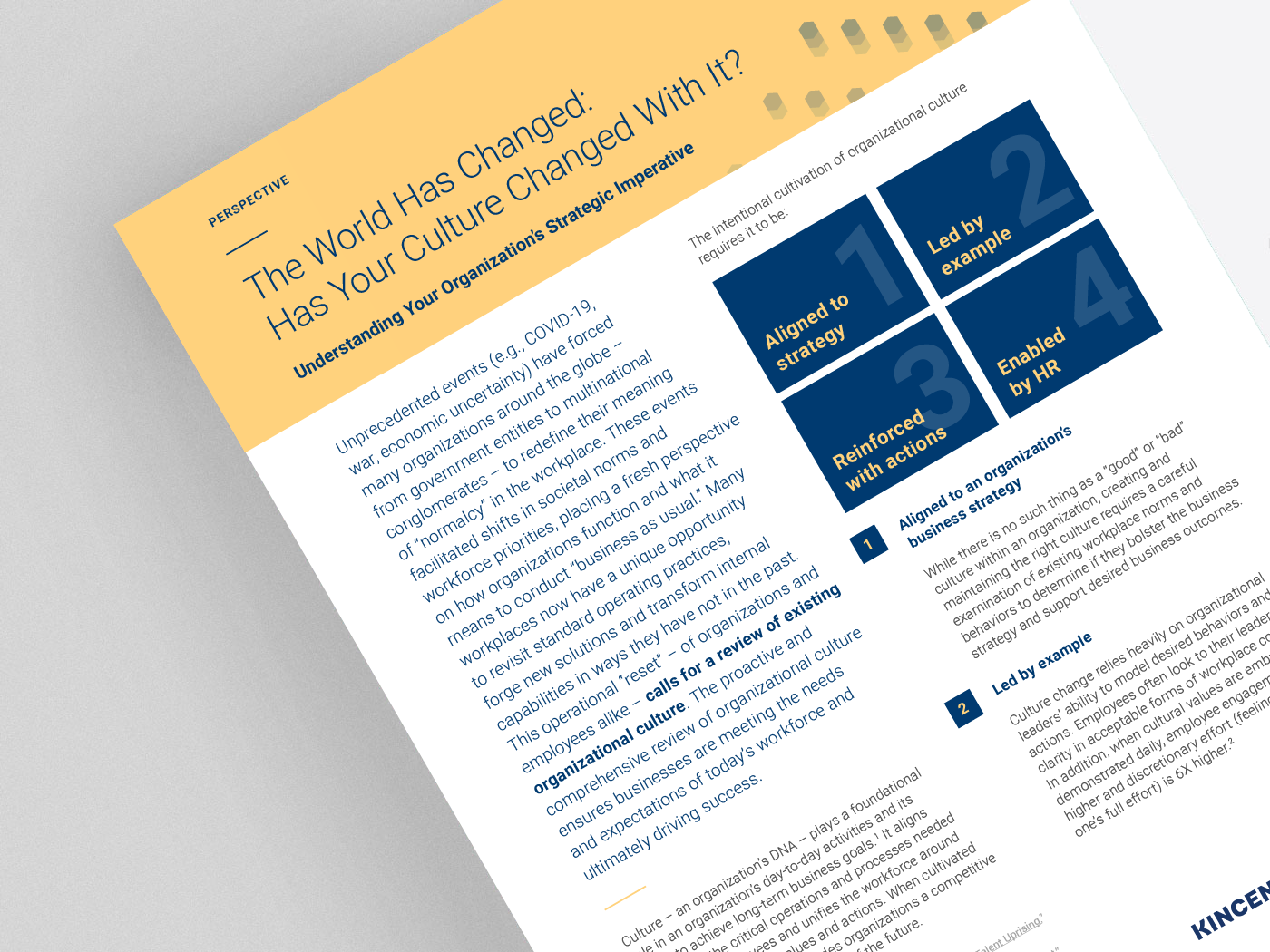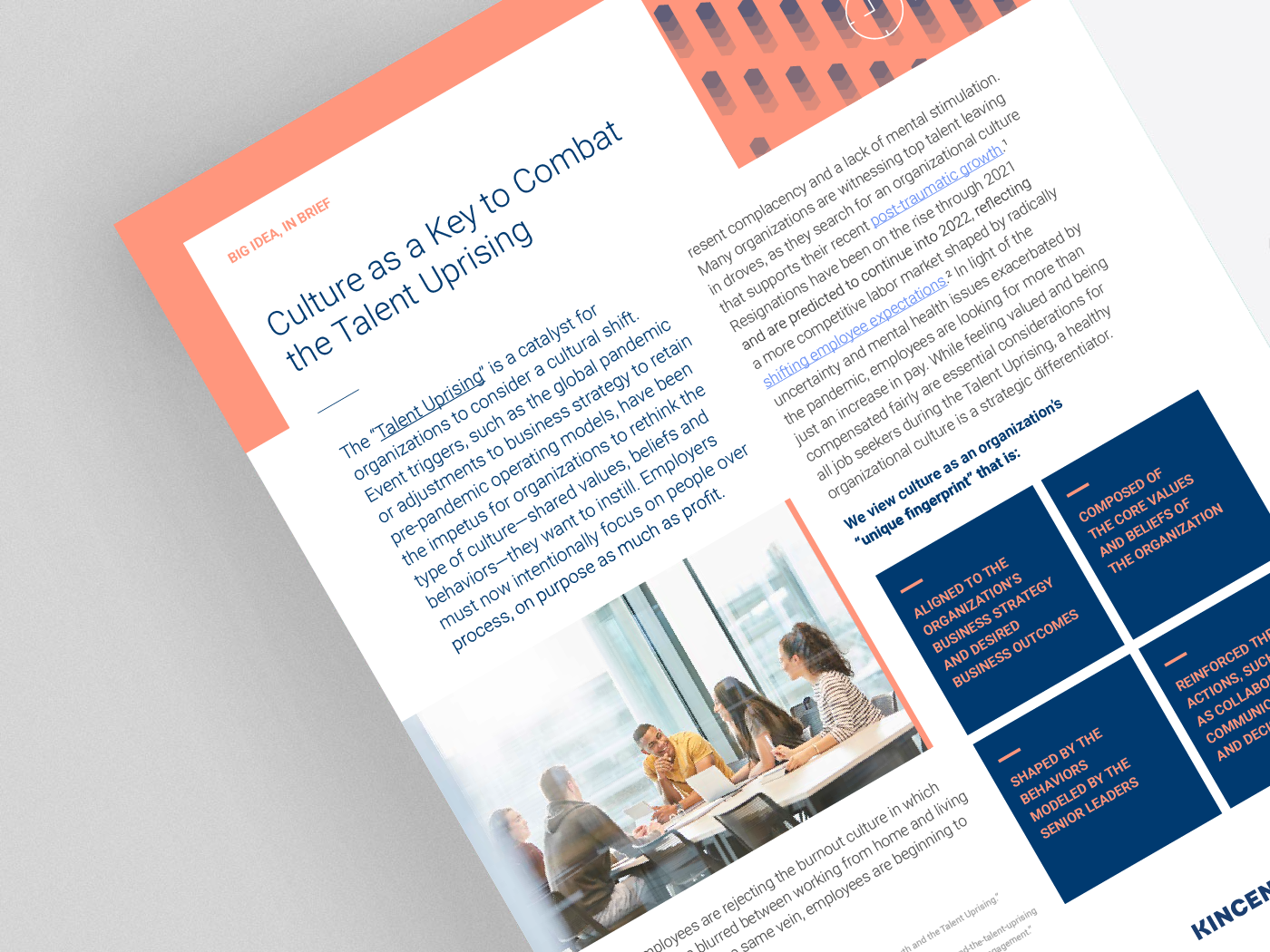
Organizational culture plays a foundational role in the ability of businesses to successfully emerge from turmoil. Look to lessons learned from the 2008 recession and, more recently, the 2020 pandemic – leaders who focused on their culture and people experiences came out ahead. Today, many are feeling heightened levels of uncertainty and volatility, and many say another recession is looming.
The threat of a recession can greatly affect workplace functionality – intensifying anxiety and fear among leaders and employees. As a result, business leaders are often forced to cut spending and prioritize business necessities, while the workforce is pushed to do more with less. These added pressures can also extend beyond layoffs, budget cuts and reorgs, charging leaders with the responsibility to successfully navigate the organization through the unknown.
At this point, many industry articles lean directly on the concept of “proactivity,” advising leaders that they need to be “recession-proofing” all elements of their organization – including its culture. However, looking beyond mediocre, short- lived employee engagement interventions, how are leaders actually recession-proofing their organizational culture? The answer is, they aren’t.
It takes more than leaders attempting to stay true to their people commitments and ensuring transparency in workforce communications to protect and vitalize workplace culture. Rather, leaders who understand culture to be a key component of their organization’s ability to reach its full potential will see success in the long run. Ultimately, a successful, healthy culture comes down to spanning cultural embedment and consistent leadership actions – not one-off initiatives.
|
Culture is a sustained pattern of behaviors resulting from underlying values and shared beliefs. Culture is tightly interconnected with numerous org dynamics – and requires intentional alignment with all factors to ultimately influence the broader effectiveness and health of an organization. |
Disjointed implementation of various cultural efforts throughout an organization works against your end goal as a leader. To emerge successfully from hardship, leaders must stop trying to mimic what is working for other businesses, and consider what is right for their organization.
After all, an organization’s culture is made up of social norms – unique to that specific workplace – and is bolstered by key business enablers that strive to emphasize and reinforce various aspects of those norms. This means each organization’s journey through uncertainty is nuanced, with several different business factors at play. All leaders will find themselves in differing circumstances bearing no one way to lead organizational culture through turmoil.
Understanding each organization’s journey through the unknown will be unique to them and their perceived cultural vision and business goals, what can leaders do to set themselves up for success?
Ask yourself, what makes your organization tick? Can you as a top-level leader articulate what it actually means and feels like to work within the organization? Culture is often viewed as an intangible concept that comes to bear as just words on the office’s wall or talking points at the end of a town hall meeting. But it goes deeper than this and requires reinforcement to truly instill the culture you want your organization to embody.
For example, your organization may say it has a culture that fosters collaboration, but if during an employee’s first day they don’t have a single interaction with another employee, or learn about what others are doing, or whom they should be working with – that is not providing the employee an experience reflective of collaboration. It creates a disjointed experience between what the stated culture is and what their reality comes to be.
Kincentric has found with our clients that incorporating a level of authenticity into your culture requires detailed evaluation of workforce sentiment, historical reviews, and an awareness of how to leverage cultural enablers while removing barriers. Although this does take time, it is necessary for leaders to have a realistic understanding of where their organization currently stands. This way, they can ensure they are modeling the correct behaviors, intentionally embedding appropriate cultural interventions throughout the talent lifecycle, and underpinning the business infrastructure to drive support for tangible culture successes.
Ask yourself, is my organization achieving the results we need? How could shifts in the marketplace push us to change and are we prepared? With many organizations unsure of what may come, this is an opportune time for leaders to consider whether elements that previously contributed to the current culture are still needed for the months and years ahead.
For example, in years past, your existing infrastructure may have relied heavily on rigid processes and hierarchical decision making, but with how the world has changed (to include virtual work, breakthroughs in AI, etc.) this may no longer be what you as an organization need or value. In some cases existing infrastructure may make it difficult for leaders and employees alike to embrace alternative ways of working, and in that case is actually a blocker to your desired culture and accompanying business outcomes.
To quote Richard Moran: “You can’t get different results by doing things the same way.” As such, leaders must consider how they can best optimize all aspects of their organization to better demonstrate the values and behaviors needed for improved and/or sustained culture. It is important to remember that, while you can have a great culture for your people, it can still be misaligned to the behaviors you need to successfully execute your business in difficult times and achieve your financial goals – requiring leaders to find and strike that balance, ultimately navigating the tension and needs across both.
In an era abounding with ongoing organizational and workforce transformations, it is important to remember that each organization’s journey through a downturn is unique to it and its business goals – there is no playbook or singular roadmap suitable for all. Leaders must reconcile with the fact that there is no way to recession-proof your organizational culture. However, by understanding how organizational culture can be used to help navigate through challenging times, and subsequently identifying and prioritizing the cultural elements that will best serve the business and its people, leaders can take a step in the right direction.
Don’t know where to start? Reach out and chat with us.
We would like to thank Jeff Jolton, Ph.D. and Holly Lennox for their review and contributions to this article.



Want the latest insights delivered straight to your mailbox?